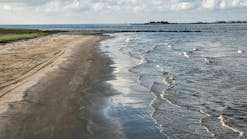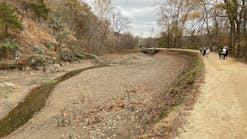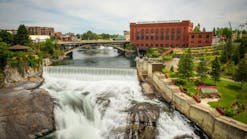
Spring is in full bloom here in Southern California. In April, we experienced a series of rainstorms that did much to alleviate some of the drier conditions that longstanding drought has given us, and it feels like the old saying about April showers is indeed true: the flower fields are as colorful as ever. But we aren’t out of the woods just yet. The latest U.S. Drought Monitor update showed more than 95 percent of California is classified under severe or extreme drought, up from about 66 percent at the beginning of the year.
To do our part, my family and I worked over the weekend to replace the water-hungry grass in our front yard with native species and have committed to only watering in the early morning hours, on designated days based on our neighborhood’s schedule. These are small steps we can take now to ensure that we are contributing positively to our community, especially as climate change continues to affect our weather patterns.
This month, our cover story looks at effective erosion control in a part of the U.S. that is no stranger to wet weather: Oregon. One of the most expensive highway projects in the state’s history, the US Highway 20 Pioneer Mountain to Eddyville Project was first planned to simply reroute 10 miles of roadway along the state’s coastline in 2005. The project dragged on for years due to landslides and water quality concerns, but thanks to a commitment to best management practices and proven erosion control methods, the Oregon Department of Transportation (ODOT) celebrated the milestone completion in the Fall of 2017. Stormwater’s Assistant Editor Jeremy Wolfe spoke with Robert Marshall, roadside development and erosion and sediment control program leader for ODOT about the project.
“The most important thing,” Marshall says, “was that the agency was willing to commit resources to erosion and sediment control.” Read more on page 12.
On page 20, when it comes to vegetation management, having the right tools for the job can make all the difference. So, when Isaac Weber and his team from the Weber company in Archbold, Ohio, were tasked with removing sediment from a 2.25-mile stretch and an additional 840-foot span further down a man-made drainage ditch, they had to think outside the box. Weber combined several tools, and using a long reach excavator with a forestry mulching attachment, the team was able to clear the ditch safely and efficiently.
We also feature articles on coastal management and flood risk in this issue, as well as a selection of new products and services related to the stormwater and erosion control industry.
Finally, preparations for StormCon 2022, to be held September 26-28 in National Harbor, Md., are underway as well. Toward the end of April, we finalized our list of accepted abstracts and are now on to organizing our program and keynote address. The nation’s largest stormwater conference will feature presentations in several tracks, including BMP monitoring; flood modeling and mitigation; green infrastructure; industrial stormwater management; programs, permits and compliance; and transportation and construction stormwater. Details for pre-conference workshops and a bus tour featuring key stormwater management and green infrastructure projects will also be announced closer to the event. If you’ve been to StormCon before, you know the high quality of presentations makes this an event not to be missed. If this is your first year joining us, you’ll see what everyone has been raving about year after year.
Thanks for reading, and I hope to see you in National Harbor! SW
Published in Stormwater magazine, May 2022.





